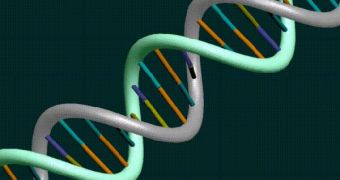Manipulating DNA is an expression of many meanings, in that any sort of influence exerted on the strands can be considered to be a manipulation. One of the most appropriate processes to be termed with this concept is gel electrophoresis, which basically refers to moving DNA around through the use of an electric field. The method is based on the fact that the deoxyribonucleic acid has a number of negative charges inside of it, which are protected on the outside by positive ions, gathered around the strands. The good thing about gel electrophoresis is that it allows experts to drag DNA pieces around, by ripping them apart from each other.
Although it may seem a bit extreme, the method comes in very handy when, for example, forensics experts try to analyze the DNA of a murder victim. Their biological samples can be ripped apart in pieces, and then each of them independently analyzed. Experts from the Netherlands Organization for Scientific Research have even managed to create a device outfitted with nanopores, and to make chunks of DNA pass through them using gel electrophoresis.
The achievement is very important, as it demonstrates a new way in which interactions that occur inside the DNA itself can be traced and analyzed. The innovation was also used to assess the hydrodynamic linkage between DNA and the nanopore itself. Researchers were amazed to learn that the retarding forces exerted by the positive ions on the surface of the pieces of genetic material were diminishing with the size of the nanopore. Basically, the experts said, the larger the nanopore, the smaller the force yielded by the ions.
The results did not match those directly obtained from mathematical models of the situation. The scientists explained this by saying that the predictive models only took into account the electrostatic forces in the system. As a result, they concluded, the hydrodynamic environment had to play a much larger and more important role in the way the DNA moved than first anticipated. The good news is that the new discovery may lead to the creation of scientific methods of observing the interactions between DNA and molecules, which has proven to be very difficult until now.

 14 DAY TRIAL //
14 DAY TRIAL //